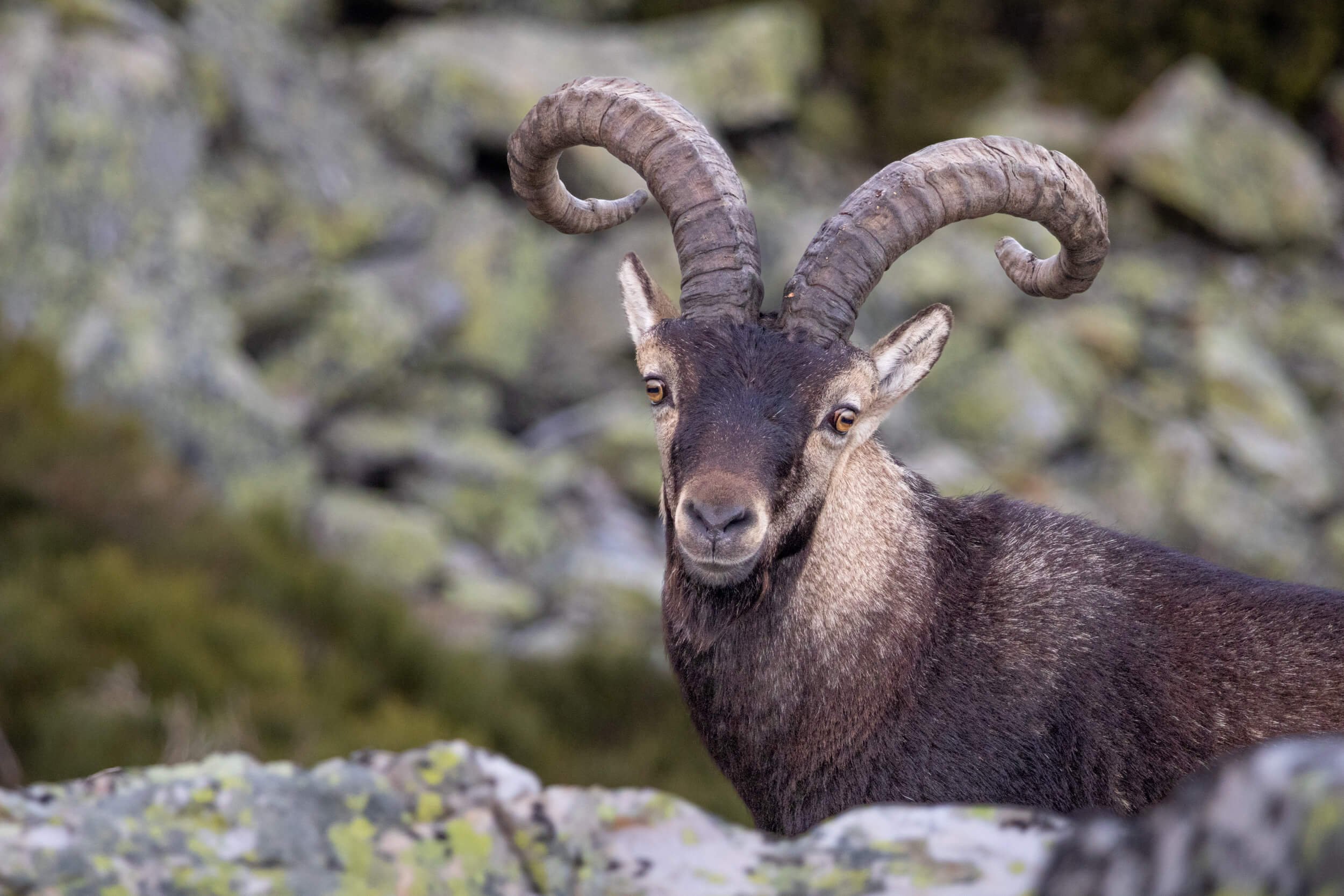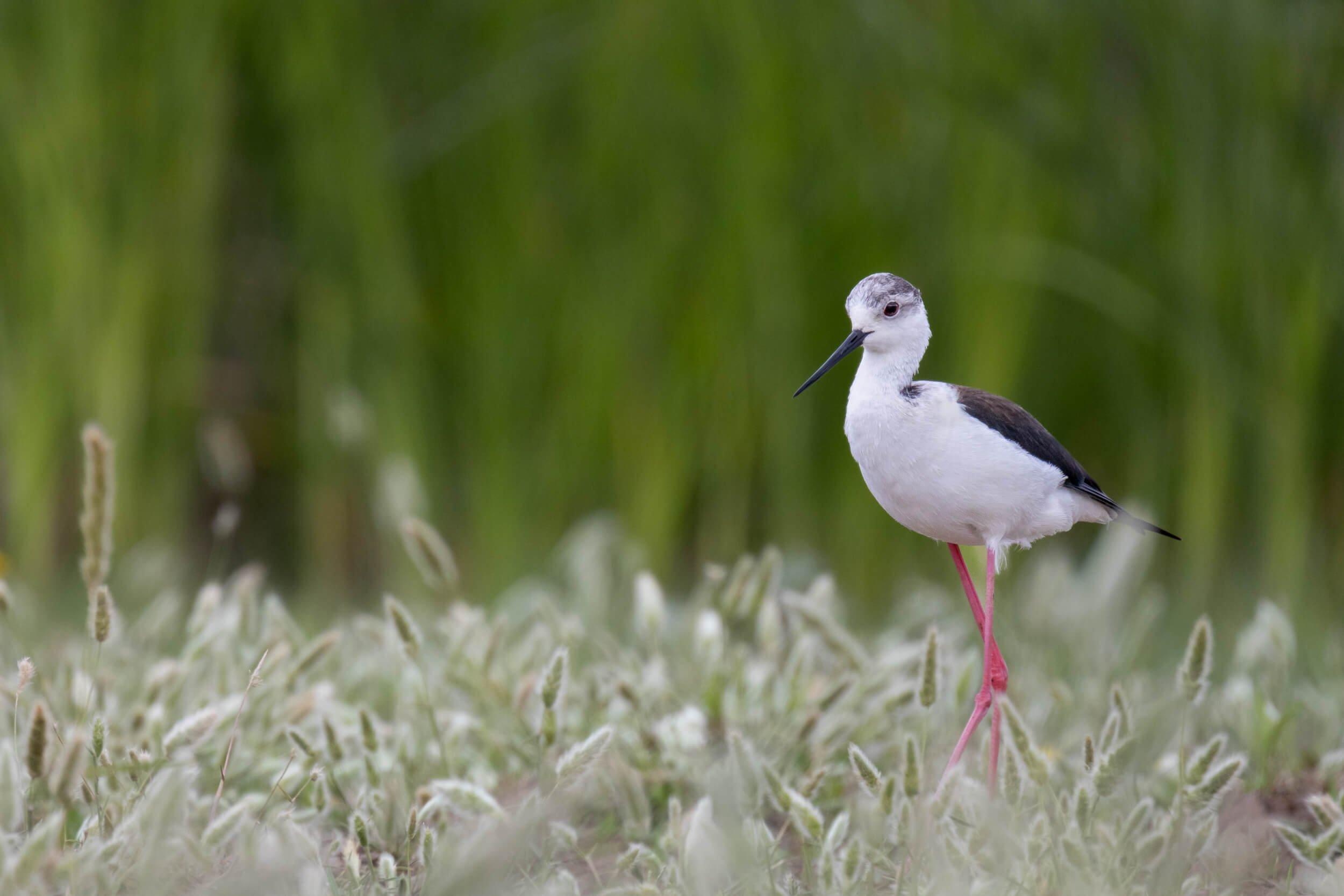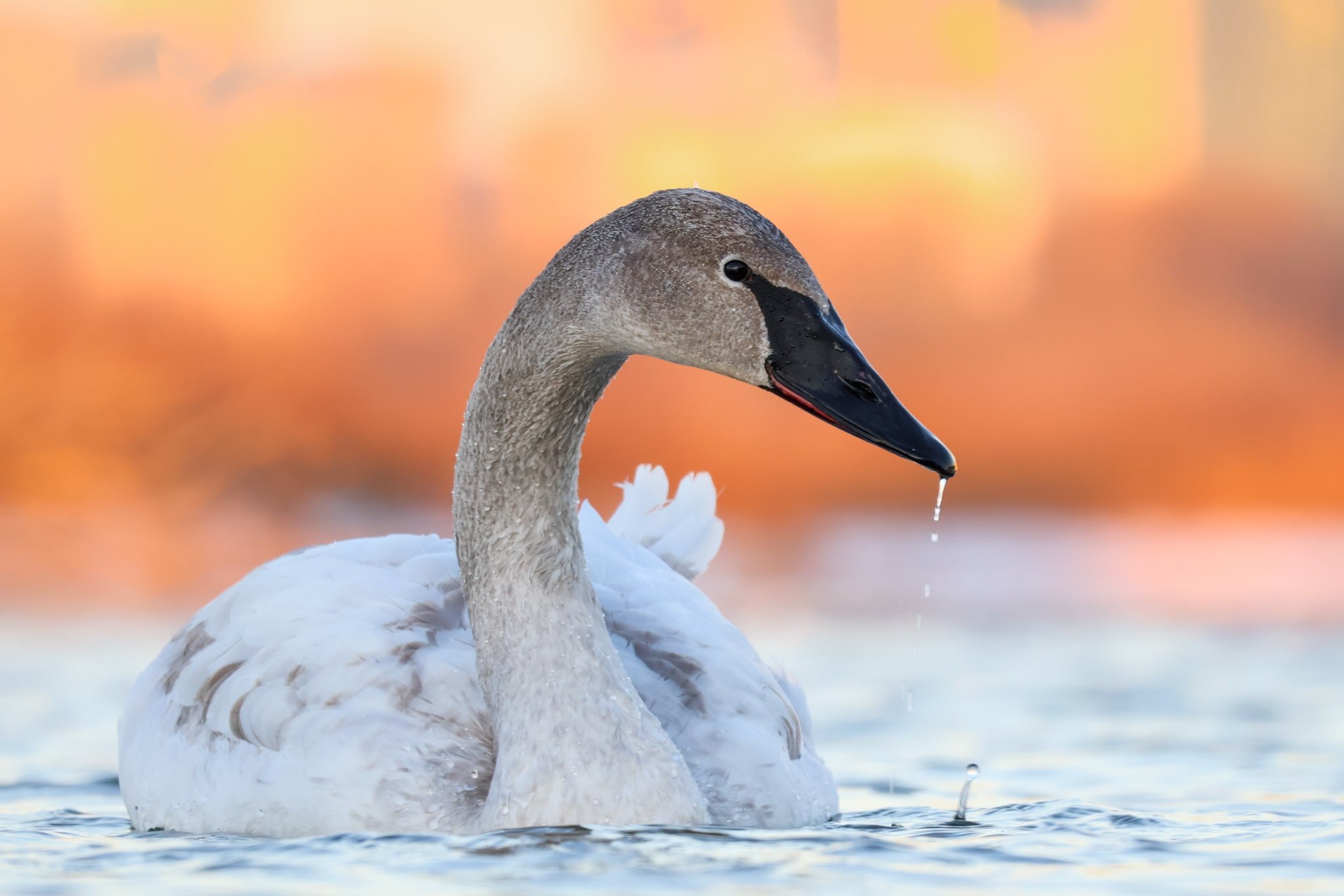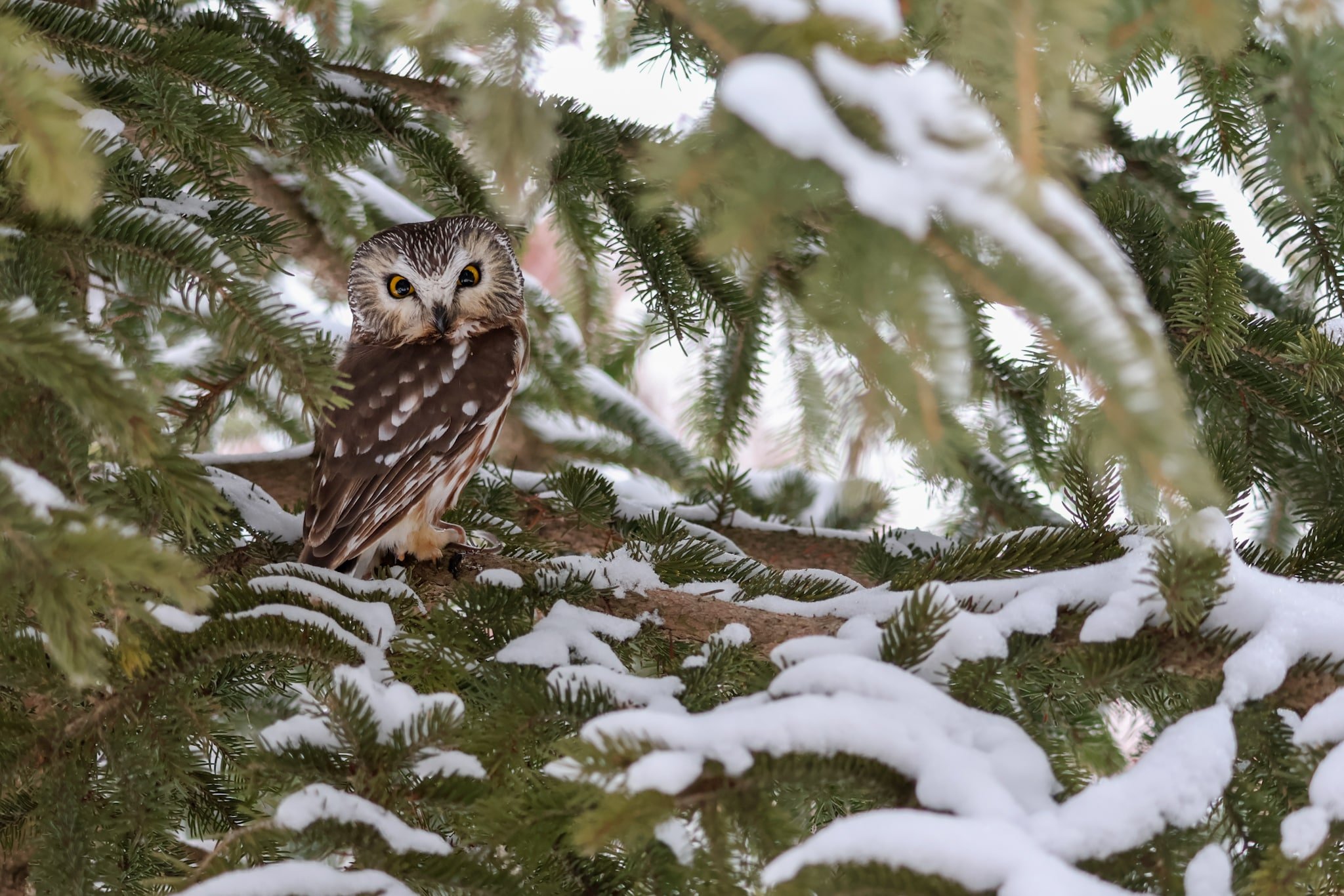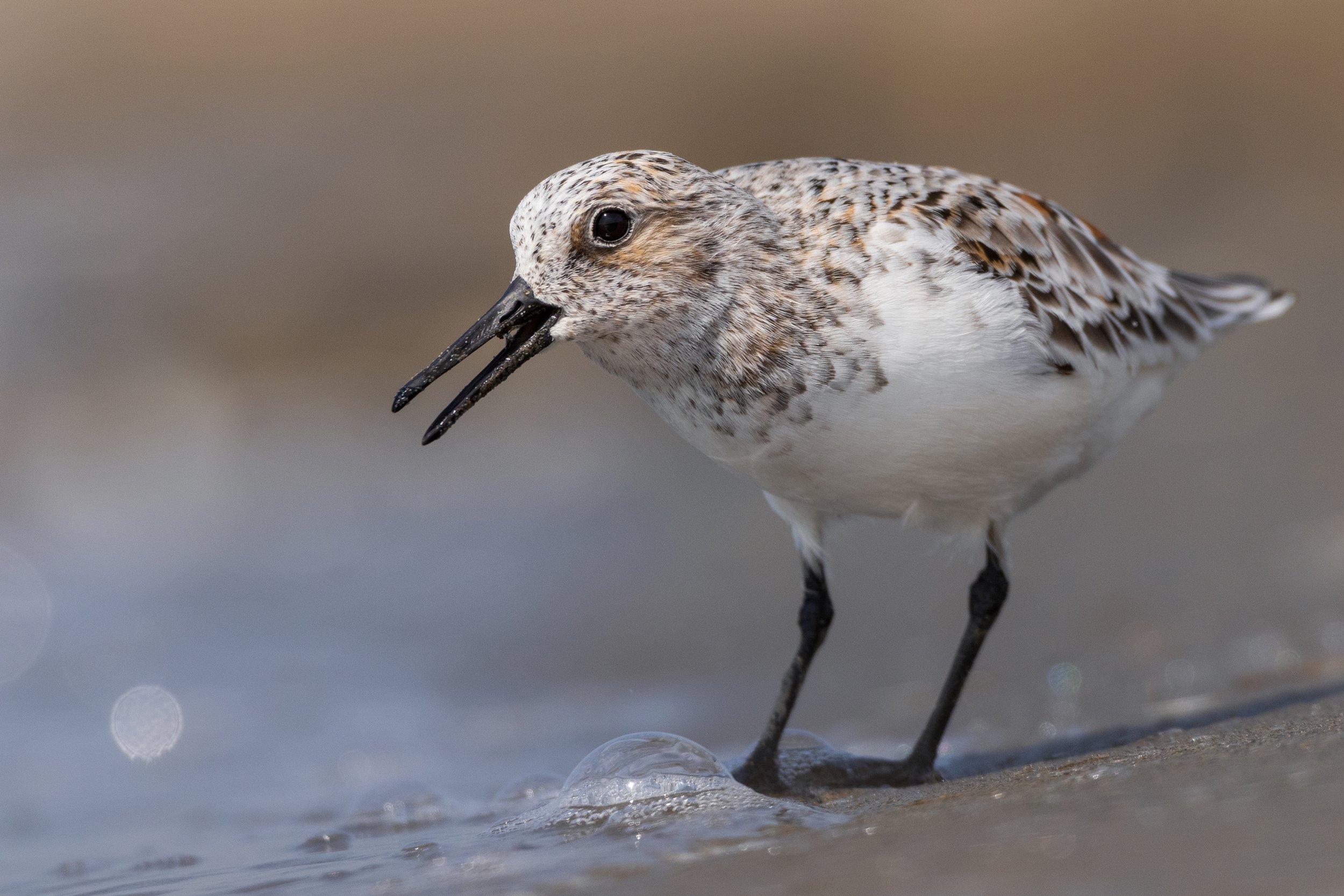The Ultimate Canon R10 Review for Wildlife Photography
Canon has been an industry leader in photography for many years, and the Canon EOS R10 is one of their latest offerings. But is it one of the best cameras for wildlife and bird photography, particularly for those working on a budget?
This article will review the Canon R10 from a wildlife photographer’s perspective. Wildlife photography has significantly transformed with the recent surge in mirrorless cameras. These systems have captivated many, causing a shift away from traditional DSLRs.
I purchased my Canon R10 in October 2022. Since then, it’s been the camera I’ve used the most in rain, shine, and lots of mud to get a strong understanding of its strengths and weaknesses for this in-depth review.
Iberian ibex | Canon R10 + Canon RF 100-400mm F5.6-8 IS USM | ISO 1600, 1/100, f/8 @ 300mm
In this Canon R10 review, I will:
Provide a detailed discussion of the Canon R10's advantages and disadvantages
Compare it to other Canon and Nikon cameras for wildlife photography
Reveal my wildlife photography settings for the Canon R10
Share sample photos (from other wildlife photographers and me)
Most importantly, I will share my thoughts on why the Canon R10 could be one of the best cameras for wildlife photography in 2023, especially for wildlife photographers on a budget!
Wildlife Photography Gear Reviews
If you are a wildlife photographer on a budget, you will not want to miss these in-depth reviews about the most affordable gear on the market.
Canon R10 Overview
The Canon R10 launched in 2022 and is one of Canon's most affordable cameras for wildlife photography without sacrificing top-of-the-line features that DSLRs lack. It is a highly lightweight crop sensor camera with an incredibly fast continuous shooting speed of up to 23 fps. On top of that, its autofocus system has algorithms derived from the Canon R3, the company's most powerful (and expensive) mirrorless camera to date. These include animal eye tracking, a game-changer if you're accustomed to DSLRs.
Specifications
Weight: 382 g (429 g with card and battery)
Dimensions: 122.5 x 87.8 x 83.4 mm
Sensor size: 22.3 × 14.9 mm CMOS with 24.2 megapixels (APS-C)
ISO: 100-32,000 native range (extendable to 51,200)
Autofocus: Dual Pixel CMOS AF II (recognizes and tracks people, animals and vehicles)
Continuous shooting speed: 23 fps (electronic shutter) / 15 fps (mechanical shutter)
Great crested grebe | Canon R10 + Canon EF 300mm f/2.8L IS II USM + 1.4x III extender | ISO 125, 1/2500, f/4 @ 300mm
Is the Canon R10 good for wildlife photography?
Overall, the Canon R10 is an excellent camera for wildlife photography. That said, no system is perfect. That’s why in this section, I will review the pros and cons of the Canon R10. This section aims to provide an unbiased review of its advantages and disadvantages for wildlife photography, focusing on key features like autofocus, image quality, and battery life.
Advantages of the Canon R10 for wildlife photography
Autofocus
As a DSLR shooter until 2022, the Canon R10's autofocus blew me away. The EOS R10's autofocus system is impressive for wildlife photography, boasting 5940 AF points, enabling quick, accurate tracking. Overall, it was the best autofocus system I'd ever used, beating out quality cameras including the Nikon D500 and Nikon D850.
The camera's Eye Detection AF benefits wildlife photography, swiftly locking onto an animal's eye and maintaining focus as the subject moves. This takes all the pressure of focusing off the photographer, allowing you to pay more attention to creating beautiful compositions. The speed with which it acquires focus will be a big shock for DSLR shooters; it quickly locks onto moving subjects, giving you far more chances to grab the critical shot. This feature makes the Canon R10 a strong contender for those who frequently shoot in fast-paced wildlife settings.
Apart from tracking, being able to use focus across the entire frame is a big plus compared to DSLR shooters, who were restricted to only using a portion of it.
Size and weight
The Canon R10's compact size and light weight are invaluable for wildlife photographers carrying their gear long distances. The compact design allows you to spend more time in the field without getting tired and maneuver into tighter spaces that wouldn’t be possible with larger setups. The camera weighs 429 g with a card and battery, making it nearly half the weight of the Nikon D500, a lightweight DSLR.
Ergonomics
The flip screen and joystick are two notable upgrades of the Canon R10, especially when compared to Nikon DSLRs. The former provides more flexibility when composing shots, making capturing stunning wildlife images from various angles easier. Most importantly, the autofocus works just as well on the flip screen as it does through the viewfinder, which wasn’t the case with DSLRs.
Before the Canon R10, I always used the D-pad to move my autofocus point. However, the joystick on this camera makes it much faster to move it to where it needs to be.
Compressed raw (CRAW) files
The Canon R10 also supports compressed raw (CRAW) files. CRAW, also known as lossy compression, is a format that reduces the data in a photo, occupying less storage space.
This feature allows photographers to benefit from smaller files, resulting in less time spent on file transfer, post-processing, a significantly expanded buffer, and saving money on memory cards and hard drives.
Having more time before your camera reaches its buffer can be the difference between getting an entire sequence of a duck taking off from the water and only the initial splashes. As someone always looking to save money and time, using CRAW does both.
High frames per second (FPS)
Additionally, the Canon R10's continuous shooting speed is excellent for capturing fast-moving wildlife without compromising image quality.
The EOS R10 can shoot up to 15 fps in mechanical and 23 fps in electronic shutter, making it ideal for capturing fast-moving wildlife. This is especially effective when shooting very slow shutter speeds. With cameras with slower fps, it’d be near impossible to get a sharp photo. However, at 15 or 23 fps, you dramatically increase your chances of capturing the photo you were after.
Price
I am always on the lookout for high-performance gear on a budget. That’s why I’m thrilled this camera doesn’t disappoint. Despite the professional-grade features, the Canon R10 defies expectations by offering superb value for money. The camera launched at $979.99. However, as of writing this article, it's listed for $879.99 on Canon’s official website. You can even find refurbished options for around $800 on Amazon, a major steal.
To put things in perspective, many popular APS-C DSLRs, like the Nikon D500, D7500, and Canon EOS 90D, launched for much higher prices and are still more expensive today if you buy them brand new. In the D500’s case, it’s almost double the price of the Canon R10!
This camera presents a viable option without breaking the bank for any photographer.
Greylag goose | Canon R10 + Canon RF 100-400mm F5.6-8 IS USM | ISO 500, 1/250, f/8 @ 400mm
Disadvantages of the Canon R10 for wildlife photography
Battery life
While the Canon R10 has many strengths, discussing its shortcomings is essential. One of the leading Canon R10 disadvantages is its battery life. Officially, the battery sustains about 350 shots off the LCD back panel and 210 shots when using the EVF. In practice, the battery is more than ten times better than that. I have easily shot more than 4000 photos for over 3-4 hours in the field without an issue.
Nonetheless, if you’re coming from a DSLR, the difference will be very apparent, and the battery will run out much sooner. With DSLRs like my Nikon D500 or even my older D700, I could use them for several sessions over a couple of days, more than double the amount with the R10.
For wildlife photographers who spend long hours in the field, a camera with a longer battery life would be more advantageous, but the reduced battery life of the Canon R10 is adequate, and you can work around it. I’ve overcome this issue by buying an extra battery and ensuring I charge it after every session. Thankfully, compact LP-E17 batteries are relatively affordable and readily available.
Weather sealing
Another concern is the Canon R10's lack of weather sealing. Wildlife photographers often shoot in challenging weather conditions, making a weather-sealed camera valuable. Without this feature, the Canon R10 may not be the best choice for photographers who frequently shoot in rainy or dusty conditions.
Like the battery life, I don’t see this as a significant issue if you properly take care of your camera. Besides being careful not to get it too wet or covered in mud, I purchased a silicone case to protect me further. Now I feel invincible (kind of joking)! Living in the UK, which can have quite rainy periods, I’ve found that the R10 can withstand a bit of rain. Just be sure to dry it well afterward.
Although its lack of weather sealing is a downside compared to more expensive cameras, I generally see this term as a way for brands to charge more money. In practice, if you take care of your camera, it should withstand the elements as long as you don’t push it to the extreme.
High ISO performance
The Canon R10's high ISO performance could be vastly improved. This is its biggest disadvantage.
Although the camera produces excellent image quality at lower ISO settings, noise becomes very visible above ISO 1600 and sometimes even lower, at like ISO 1000, depending on the lighting conditions.
This is a disadvantage for people like me who often photograph wildlife in low-light conditions. I knew crop sensors were worse at handling high ISOs, but the Canon R10 was significantly worse than my Nikon D500, which was a step down from full frames, like my old D700.
Like most other cons on this list, though, it's not a deal-breaker; photographers can often overcome it with the appropriate technique. To avoid shooting above ISO 1000 with the Canon R10, I tend to set my shutter speed very slow when needed, such as 1/50 or even 1/25, when shooting after sunset or in the shade. This is only achievable with an excellent hand-holding technique (which I’m still working on) aided by the camera’s high-speed frame rates.
Lack of in-body image stabilization (IBIS)
The lack of in-body image stabilization (IBIS) can disadvantage Canon R10 wildlife photographers. While this may not be a deal-breaker, it is something to consider when capturing wildlife. Of all the cons, this is the most minor.
Backcountry Journeys explains that telephoto lenses do not benefit much from IBIS compared to short focal lengths: “On longer telephoto lenses, like a 500mm, the sensor shifting mechanism isn’t able to move enough to provide adequate shake compensation.”
Buffer
The Canon R10’s limited buffer can impact its ability to capture long sequences of action when shooting in continuous burst mode in wildlife photography, mainly when shooting in RAW. It can capture up to 23 fps, but its buffer can be an issue, limiting the number of continuous shots you can take. Waiting for the buffer to clear before shooting again can cause you to miss crucial moments. To overcome the buffer limitations, however, there are ways to overcome these:
Don’t shoot at the fastest frame rate. I usually have it set to 15 fps in electronic shutter mode.
Only press the shutter for less than a second to allow it to clear without having it locked up for several seconds and missing shots.
Set your camera to CRAW, which takes up far less space on the memory card. This ensures I give the camera time to reset the buffer so I can shoot the action for longer.
Get faster memory cards. I used to shoot with V30 memory cards, but investing in faster V60s or V90s, has proven to improve the buffer significantly.
Although the buffer is inferior to other cameras, in most cases, proper technique will make it a non-issue.
American white ibis | Canon R10 + Canon RF 100-400mm F5.6-8 IS USM | ISO 640, 1/500, f/8 @ 300mm
Competitors: How does the Canon R10 compare to other cameras?
Nikon D500 vs Canon R10
Pros
Low light performance: The Nikon D500 performs better than the Canon R10 in low light. It has a marginally bigger sensor with fewer and larger megapixels, allowing it to gather more light. This is particularly useful for wildlife photography, where you often boost your ISO.
This is particularly useful for wildlife photography where you often have to boost your ISO.
Battery life: Battery life is another area where the Nikon D500 excels. The D500's superior battery life ensures you can keep shooting longer without worrying about changing batteries. Officially, it offers 1240 shots per charge compared to the Canon R10’s 450.
Weather sealing: The Nikon D500 is well-known for its robust build and excellent weather sealing, unlike the Canon R10’s more plastic body. This makes it a more reliable choice for wildlife photography, where you're often exposed to harsh outdoor conditions.
Cons
Autofocus: The Canon R10 has an edge over the Nikon D500 in its autofocus system. The R10's autofocus is faster, more accurate, and allows for animal eye tracking, which can be crucial when capturing fast-moving wildlife.
Flip screen: Although both cameras have a flip screen, the Canon R10's is the only one with functional autofocus. This can be extremely useful for composing shots at awkward angles.
Frames per second: The Nikon D500 used to be considered a speed demon at 10 fps, but the Canon R10's 23 fps make it look slow. This allows you to capture far more frames in a burst, increasing your chances of getting that perfect shot.
Size and weight: The Canon R10 is lighter and more compact than the Nikon D500. This makes a big difference when carrying your gear around the field all day.
Price: Finally, the Nikon D500 is generally more expensive than the Canon R10 if you buy it from a major supplier, like Amazon or Nikon.
European robin | Canon R10 + Canon RF 100-400mm F5.6-8 IS USM | ISO 800, 1/100, f/8 @ 400mm
Canon R7 vs Canon R10
Pros
Battery life: The Canon R7 has an official 660 shots per charge compared to the Canon R10’s 450. This can be an advantage for wildlife photographers who spend extended periods in the field since it eliminates the need to swap out batteries.
Weather sealing: The Canon R7 also boasts superior weather sealing. This makes it better suited for outdoor photography with unpredictable weather conditions.
Frames per second: The Canon R7's 30 fps maximum continuous shooting speed gives it an edge over the R10’s 23 fps.
IBIS: The Canon R7’s IBIS helps to reduce camera shake, resulting in sharper images. This can be particularly beneficial when shooting handheld or in low light conditions, especially on shorter lenses.
Extra memory card slot: The Canon R7 also offers an extra memory card slot, providing additional storage and backup options. This can save you time in the field, avoiding the need to change cards as frequently to not miss that once-in-a-lifetime shot.
Megapixels: The Canon R7 has 32.3 MP vs. the Canon R10’s 24 MP. This lets you capture more detail with the proper technique and sometimes crop more while keeping a good resolution.
Cons
File size: The Canon R7’s higher resolution comes at a great cost: large file sizes. These can quickly fill up your memory cards, require more storage space, and, in turn, more expenses.
Size and weight: The Canon R7 is also heavier (612 g vs. 429 g) and larger than the R10. This can be a factor to consider, especially for wildlife photographers who often need to carry their gear long distances. This is not a significant issue since it's still a tiny, light camera compared to others.
Price: The Canon R7 is more expensive ($1,499) than the Canon R10 ($979.99/ $879.99). While it does offer several advantages, you'll need to weigh these against the additional cost. I do not see enough benefits to justify the added expense.
Sandhill crane | Canon R10 + Canon RF 100-400mm F5.6-8 IS USM | ISO 500, 1/1000, f/8 @ 400mm
Canon R8 vs Canon R10
Pros
Low light performance: The Canon R8 shines with low light performance. Its advanced sensor and image processing capabilities allow it to capture stunning images even in challenging lighting conditions.
Frames per second: When capturing fast-moving wildlife, the Canon R8's higher frames per second rate (40 fps) gives it an edge over the Canon R10. This allows you to capture more frames in a burst.
Autofocus: The Canon R8 also boasts a superior autofocus system. Its autofocus is faster and more accurate.
Cons
Weight: The Canon R8 (461 g) is marginally heavier than the R10 (429 g). The compact and lightweight design of the R10 can make it a more comfortable choice for extended fieldwork.
Price: The Canon R8 ($1499) is more expensive than the Canon R10 ($979.99/ $879.99).
Note: Look out for my upcoming review of the Canon R8 for wildlife photography. You’ll be surprised by the results!
European golden plover | Canon R10 + Canon RF 100-400mm F5.6-8 IS USM | ISO 640, 1/800, f/8 @ 300mm
Canon R10 settings for wildlife and bird photography
Whenever I use my Canon R10, I have a few go-to settings for wildlife photography:
File type: CRAW
Exposure mode: Manual
ISO: Auto ISO with a maximum ISO of 6400 (exposure compensation to control the ISO)
Autofocus mode: Ai Servo (Continuous)
Autofocus area mode: 1-point AF most of the time control where I focus, but Spot AF if I need more precise focusing, and Flexible Zone AF 1 for birds in flight sometimes.
My wildlife photography gear for the Canon R10
I tend to shoot my Canon R10 with three lenses for different purposes:
Canon RF 100-400mm F5.6-8 IS USM - to be very light and mobile, but also getting excellent reach and zoom range.
Canon EF 300mm f/2.8L IS II USM - for the best low light performance, image quality, and backgrounds. It’s also great for shooting at fast shutter speeds without high ISOs.
Canon RF 800mm F11 IS STM - to move around but also photograph more skittish subjects or animals at a distance without disturbing them.
Black-winged stilt | Canon R10 + Canon RF 800mm f/11 | ISO 500, 1/500, f/11
Bonus: Canon R10 community feedback and photos
Matt Parish
Matt is an amateur wildlife photographer based in Ontario, Canada. He's on a mission to showcase intimate, detailed images of animals from his own unique perspective. He’s shot the Canon R10 since September 2022.
“The Canon R10 has been a game changer for my wildlife photography. It has a modern-day feature set in a small, travel-friendly body that doesn't break the bank. Paired with RF native glass, the AF is fast and accurate. I can always count on the R10 to find my subject anywhere in the frame. This camera has simplified my fieldwork and post-processing workflow, with excellent image quality and less searching for that tack-sharp photo. It has made shooting enjoyable with much less effort than ever before.”
Trumpeter swan | Canon R10 + Canon RF 100-400mm F5.6-8 IS USM | ISO 1000, 1/160, f/8 @ 400mm | Credit: Matt Parish
Northern saw-whet owl | Canon R10 + Canon RF 100-400mm F5.6-8 IS USM | ISO 800, 1/60, f/5.6 @ 100mm | Credit: Matt Parish
Karim Bouzidi Idrissi
Karim is a wildlife photographer in QC, Canada with an insatiable curiosity for biology and birds. His photography approach consists of learning about birds to ID them by ear, predict their behavior or where to find them. He has been shooting with the Canon R10 since January 2023.
“The R10 paired with the RF 100-400 has been a sweet, portable little combo that does the job. While it doesn't excel in low light, it's still very decent in tricky lighting conditions when paired with a lens with good stabilization, like the RF lenses. The autofocus and eye detection are effective, snappy, and customizable. The R10 is very light with compact ergonomics, including an articulating flip screen, which is helpful for low-angle shooting.”
Black-capped chickadee | Canon R10 + Canon RF 100-400mm F5.6-8 IS USM | ISO 800, 1/500, f/5.6 @ 100mm | Credit: Karim Bouzidi Idrissi
Great gray owl | Canon R10 + Canon RF 100-400mm F5.6-8 IS USM | ISO 800, 1/25, f/8 @ 400mm | Credit: Karim Bouzidi Idrissi
Rain Saulnier
Rain Saulnier is an amateur wildlife photographer from Kingston, Ontario, who moved to Calgary, Alberta, in 2018. Rain's passion for wildlife photography began in May 2020 when he purchased the Sigma 150-600mm to pair with his Canon Rebel. In March 2023, Rain transitioned to the Canon R10.
“The Canon R10 was a game changer, letting me enter mirrorless photography at a reasonable budget. Canon has similar AF algorithms in the entry-level R10 as those in their high-end models. It's been super fun to use with the RF 100-400mm and Sigma 60-600mm. When paired with the lightweight RF 100-400mm, it might be the most compact, powerful, and budget-friendly wildlife kit, giving me easy access to get great shots anywhere I go.”
Cliff swallow | Canon R10 + Canon RF 100-400mm F5.6-8 IS USM | ISO 200, 1/640, f/8 @ 400mm | Credit: Rain Saulnier
Sanderling | Canon R10 + Sigma 60-600mm F4.5-6.3 DG OS HSM | ISO 500, 1/1600, f/6 @ 600mm | Credit: Rain Saulnier
Bottom line
The Canon R10 has completely revolutionized the way I practice wildlife photography. After shooting several Nikon DSLRs, the Canon R10 is better than all of them for most of my needs. Undoubtedly, its far superior autofocus and frame rate are the main areas that elevate it over all DSLRs. Being able to track an animal’s eye all over the frame in a blink of an eye while firing off 15 or 23 fps cannot be understated.
Thanks to these two advances I can now:
Focus a lot more on my composition rather than frantically moving my autofocus point.
Shoot at far slower shutter speeds.
While acquiring better gear does not immediately make you a better wildlife photographer, it improves your chances of creating the pictures you’re after by removing many of the annoyances of inferior cameras.
As a big fan of crop sensor cameras, I was waiting for Nikon to release an updated mirrorless version of the Nikon D500 with animal autofocus to compete with other brands. After unsuccessfully waiting several years, Canon released the R10, which, despite some minor disadvantages, is everything any Nikon D500 or other crop sensor DSLR owner would want from a new camera.
In addition, if you love extra reach, having a 1.6x crop factor will be a bonus to get your subjects larger in the frame.
Overall, I can confidently say that the Canon R10 is one of (if not) the best budget camera for wildlife photography in 2023. For its price, its features stack up with many of the best wildlife photography cameras in general. Most importantly, barring a few extra bells and whistles, it is a strong competitor to the Canon R7 for the best crop sensor camera for wildlife photography.
Without a doubt, the Canon R10 has no competitors when it comes to packing tons of value at an affordable price. It still baffles my mind that for less than $1000, you can get a camera whose autofocus handily beats all DSLRs.
You just have to pair it with a reasonably-priced Canon lens, like the Canon RF 100-400 or the Canon RF 800mm F11 IS STM, to create a killer budget kit for wildlife photography.
All that said, I hope this review has been helpful and informative. Be sure to get out in nature and happy shooting!
Palm warbler | Canon R10 + Canon RF 100-400mm F5.6-8 IS USM | ISO 800, 1/250, f/8 @ 400mm
Where to buy the Canon R10
If I were to buy this camera now, I would try to get the cheapest option possible while choosing a platform I felt safe on. I have had a great experience with Amazon, where I bought my Canon R10, which offers excellent security.
Several reliable sites are available for those who want to buy second-hand directly from people. EBay, Kijiji, Craigslist, Facebook Marketplace, and Gumtree offer excellent deals. Most of my gear is second-hand, and I have had no significant negative experiences.
These platforms don't offer the same level of buyer protection as Amazon, so you'll need to be cautious. That being said, it's possible to find a Canon R10 for sale in excellent condition on these sites.

